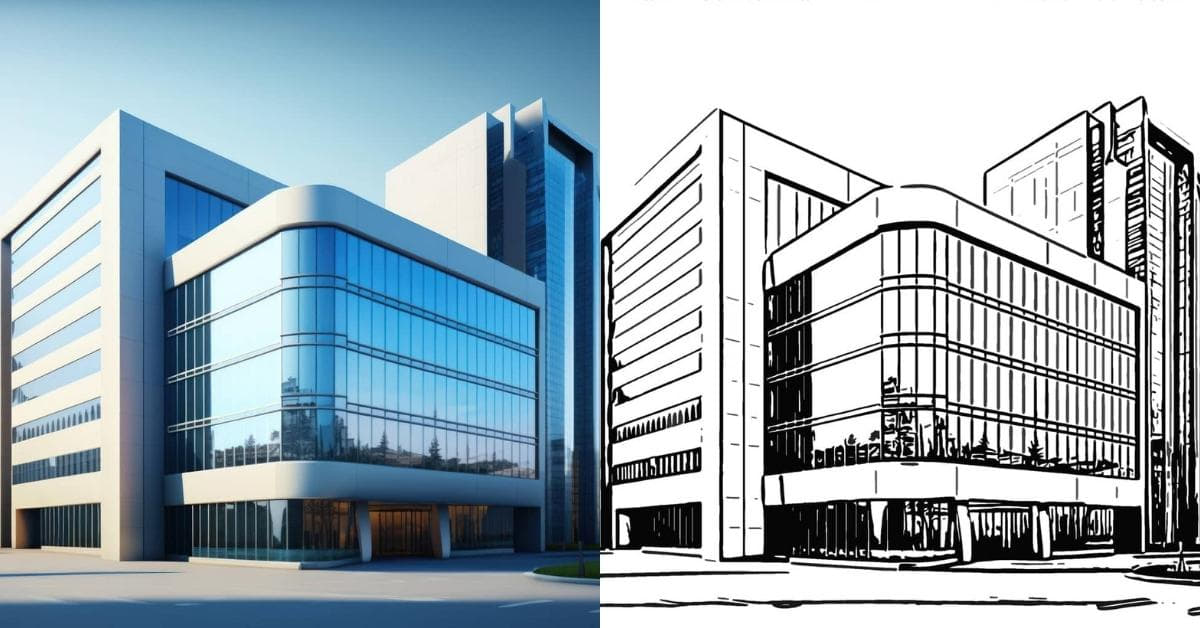In the world of digital design, raster to vector drawing is a process that can make a significant impact on the quality and versatility of your graphics. Whether you’re a professional graphic designer, a hobbyist, or someone looking to enhance their design skills, understanding the conversion from raster to vector can be a game-changer. In this article, we’ll explore the concept of raster to vector drawing, its benefits, and how you can perform this transformation. We’ll also address some frequently asked questions (FAQs) to ensure you have a complete understanding of the topic.
What is Raster to Vector Drawing?
Raster and vector graphics are two fundamental types of digital images, each with its unique characteristics. Raster images are composed of a grid of pixels, and they are ideal for photographs and complex, detailed visuals. On the other hand, vector graphics use mathematical equations to define shapes and lines, making them suitable for logos, icons, and illustrations.
Raster to vector drawing is the process of converting a raster image into a vector format. This conversion enables you to scale, edit, and manipulate your design without losing quality. In essence, it turns a pixel-based image into a collection of mathematical objects, such as points, lines, and curves. This transformation opens up a world of creative possibilities.
The Benefits of Raster to Vector Drawing
- Scalability: One of the most significant advantages of vector graphics is their scalability. You can enlarge a vector image without any loss of quality, making it ideal for projects that require images in various sizes, such as logos on websites or printed materials.
- Editing Flexibility: Vector images are easily editable. You can modify colors, shapes, and sizes without any pixelation or distortion, which is especially useful when refining a design.
- Reduced File Size: Vector files tend to be smaller in size compared to raster images. This is crucial for web design, as smaller files lead to faster loading times.
- High Print Quality: Vector graphics ensure high-quality prints. Whether it’s a small business card or a large billboard, vector images will look sharp and clear.
- Multi-Purpose Use: Vector images can be used in a variety of contexts, from business cards to signage to promotional materials. They offer versatility in design applications.
How to Perform Raster to Vector Conversion
Now that you understand the advantages, you might wonder how to make the conversion. There are several methods, but two primary approaches are commonly used:
- Manual Tracing: This method involves tracing the raster image manually using vector design software like Adobe Illustrator or CorelDRAW. Designers use tools like the Pen Tool to recreate the shapes in the raster image as vectors. It provides complete control but can be time-consuming.
- Automated Conversion: Specialized software and online tools can perform automated raster to vector conversion. These tools use algorithms to detect shapes and convert them into vector objects. While this method is faster, it may require manual adjustments to achieve a precise result.
FAQs
Q1: Can any image be converted from raster to vector?
A1: In theory, yes, but the quality of the result depends on the complexity and resolution of the original image. High-quality, well-defined raster images yield the best vector conversions.
Q2: What software can I use for raster to vector conversion?
A2: Popular vector design software like Adobe Illustrator and CorelDRAW are commonly used for manual tracing. For automated conversion, there are online tools like VectorMagic and desktop software like Adobe Illustrator’s Image Trace feature.
Q3: Are there limitations to automated conversion?
A3: Yes, automated conversion tools may struggle with highly detailed or intricate images. In such cases, manual tracing is often the better choice.
Q4: Do I need to be a professional designer to perform raster to vector conversion?
A4: No, while it helps, many tutorials and resources are available for beginners. With practice, you can become proficient in raster to vector conversion.
Q5: What file formats are vector images typically saved in?
A5: Vector images are commonly saved in formats like SVG, AI (Adobe Illustrator), and EPS (Encapsulated PostScript).
Conclusion
Raster to vector drawing is a valuable skill that can elevate your design capabilities. By understanding the benefits of vector graphics and the methods for raster to vector conversion, you can enhance your design projects and create professional, scalable, and versatile images. Whether you’re a designer or an enthusiast, the power of vector graphics is at your fingertips.
This page was last edited on 22 February 2024, at 4:00 pm
